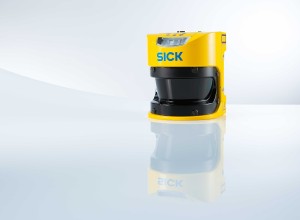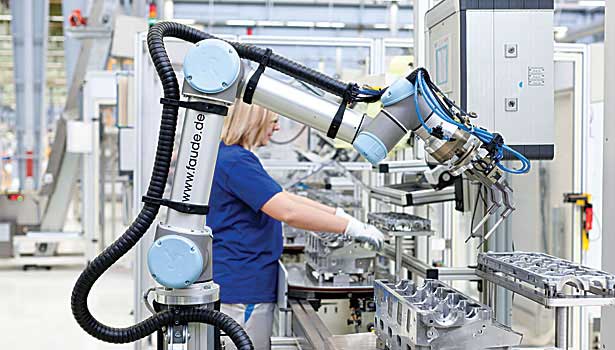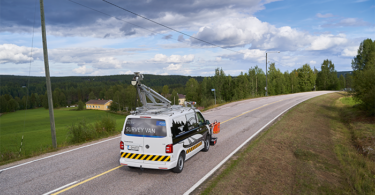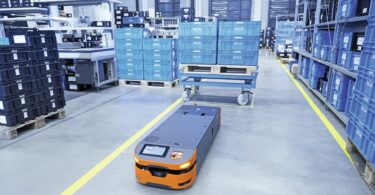This post is part of an ongoing series on collaborative robots. See the rest of the posts in the series.
***
Human and robot interaction is no longer a thing of science fiction. Collaborative robots now work in the same area as human workers, and an increasing number manufacturing facilities are using collaborative robots to augment the capabilities of human workers and offload ergonomically challenging tasks. For example, placing a cockpit into a car during automobile assembly—a difficult task for a person to accomplish alone—can be more easily completed by a hand-guided collaborative robot.
In spite of the value of collaborative robots to the manufacturing facility, any robot that works with or around people also poses potential safety concerns. Because of this, a risk assessment needs to be performed on every robot application. This will determine if robots need additional safe guarding to reduce the safety risks to personnel. Keep reading below to learn about two possible solutions to different situations where robots and humans might work together—whether they are in the same area or in direct collaboration with one another.
Situation 1: Robots and People Sharing a Workspace
In this situation, workers need to enter the robot work area, but robots and humans do not share tasks or assistance. Here, it is important to ensure safety in case a worker gets too close to the robot. It is also important to maintain productivity by avoiding false stops and restarts of the robot.
Solution: Speed and Separation Monitoring
With speed and separation monitoring, the robot works at slower and slower speeds as the distance between the worker and the robot decreases. If the separation drops below a set minimum distance, the robot comes to a safety-rated monitored stop. Restarting the robot only requires the worker to move further away from the robot. The robot does not have to be touch-safe, but it does have to have special safety features that allow it to safely monitor its own speed and position for different areas in the workspace. A safety device that will monitor the worker's position is also required.
This solution allows the robot and operator to work independently in the same space without stopping the robot completely (unless the person gets too close to the robot). It can significantly increase productivity and decrease floorspace, and it also allows for safe, fenceless workspaces.
Situation 2: Robots and People Sharing Tasks
In this situation, a worker in the assembly area shares tasks with or is assisted by a collaborative robot. This requires the worker to be close enough to the robot to complete the shared tasks without stopping the robot.
Solution: Safe Robot Touch Control (Power and Force Limiting)
With this solution, the robot can detect when a worker comes in contact with it, in which case the robot stops safely. However, if the robot is moving at high speeds the operator could still get hurt. Therefore, the robot speed slows down as the worker approaches the robot’s work envelope. The robot progressively slows down to a safe speed defined by a risk assessment, or stops completely at the operator's touch. The robot needs to have special safety features that will detect when a person comes in contact with it to provide a safe stop. A safety device that will monitor the worker's position is also required.
This allows the robot to be used as a flexible production assistant in manufacturing operations, providing relief for employees by performing ergonomically inconvenient work steps without the risk of harming workers. For example, robots can present parts directly to a person, or the robot can assist with moving heavy parts.
 Both of the solutions described above can be accomplished with the same technology adapted to the unique situation, using S3000 Safety Laser Scanners with SIM-4 (a SICK solution that safely monitors up to 4 protective fields simultaneously). SICK can also provide help with risk assessments, safety system designs, and validation services for any of these robot applications.
Both of the solutions described above can be accomplished with the same technology adapted to the unique situation, using S3000 Safety Laser Scanners with SIM-4 (a SICK solution that safely monitors up to 4 protective fields simultaneously). SICK can also provide help with risk assessments, safety system designs, and validation services for any of these robot applications.






